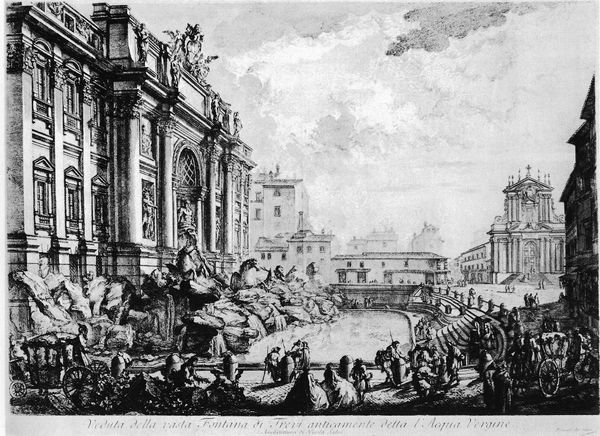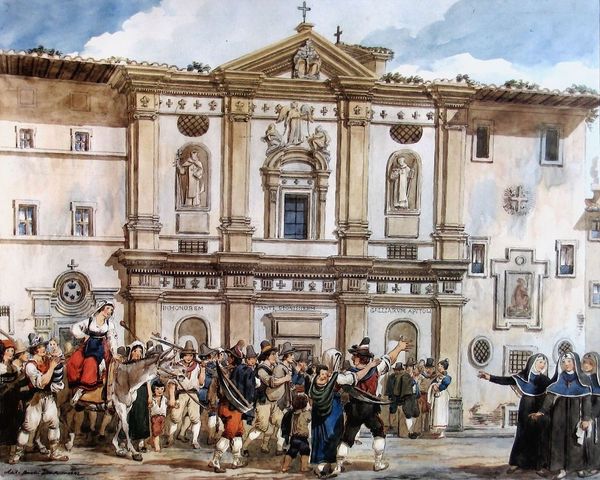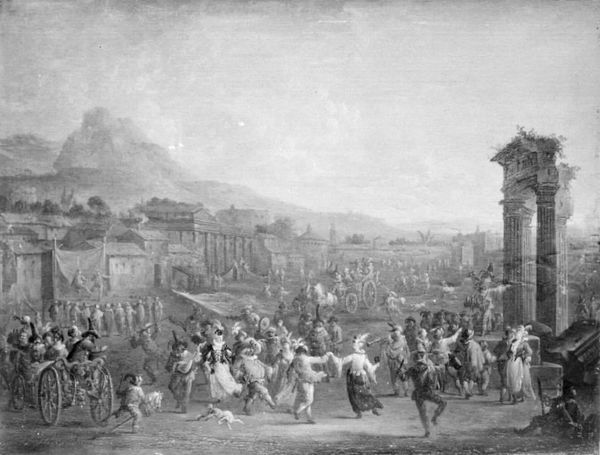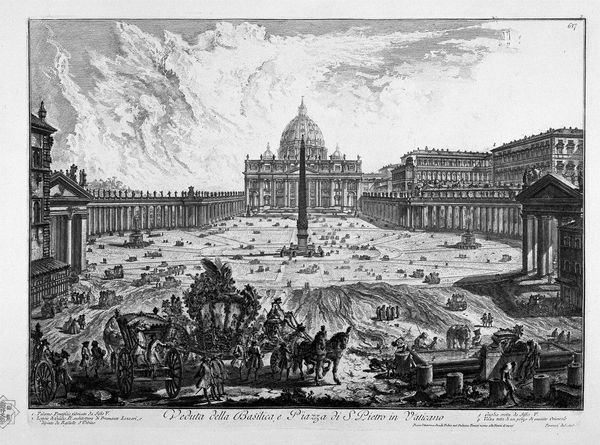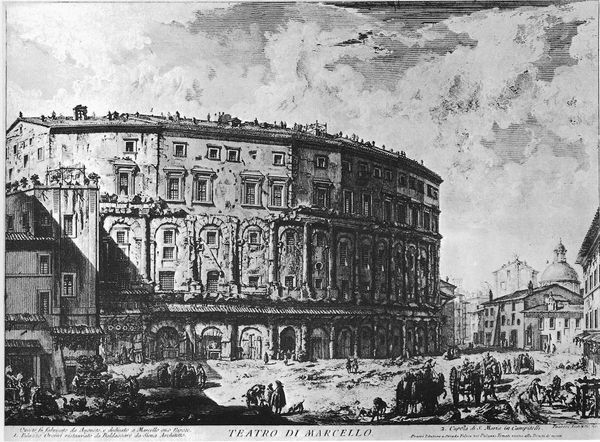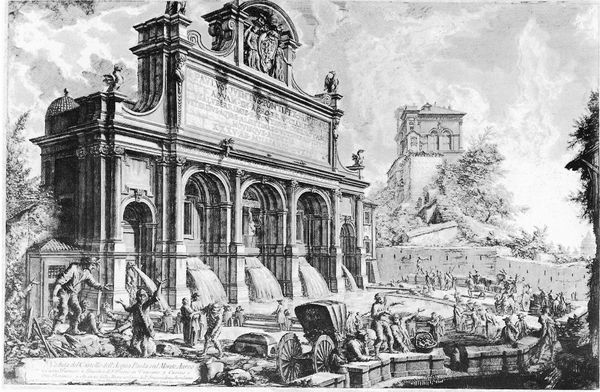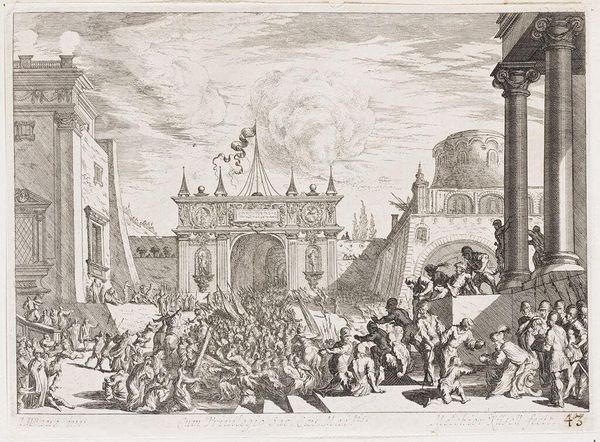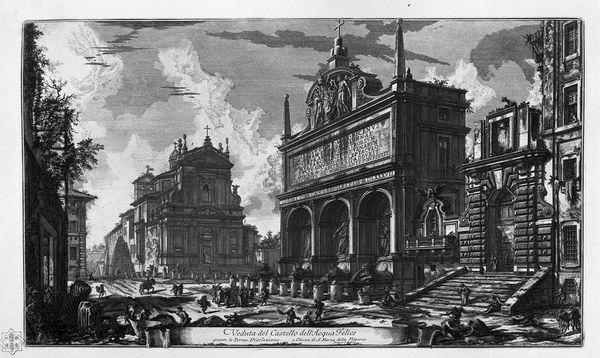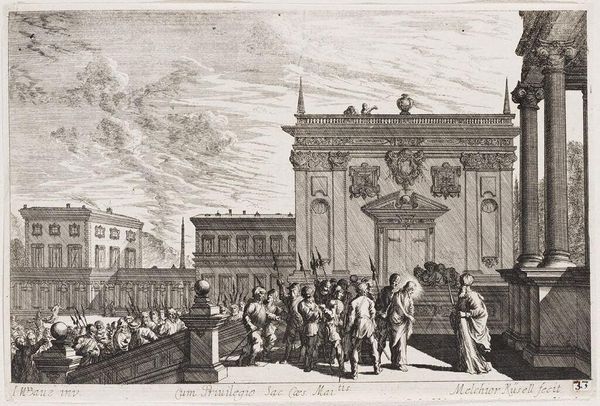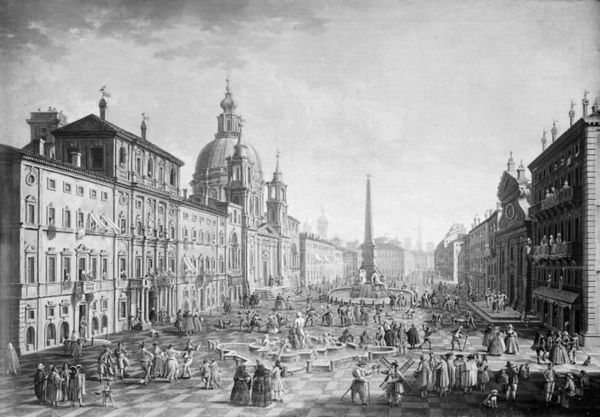
drawing, watercolor
#
drawing
#
urban landscape
#
landscape
#
oil painting
#
watercolor
#
city scape
#
romanticism
#
cityscape
#
genre-painting
#
watercolor
Copyright: Public domain
Achille Pinelli's "The Port of Ripetta" was made with watercolor and ink, common materials for documenting urban life in the early 19th century. The appeal of watercolor lies in its immediacy. Pinelli would have been able to quickly capture the atmospheric conditions of the port and the activities of the figures populating it. Notice the washes of color that define the buildings, and the delicate lines used to describe the clothing of the people. The artist has created contrast between the classical architecture and the working-class people, who are carrying heavy loads or engaged in leisure activities such as playing cards. The combination of ink and watercolor allowed Pinelli to record details of everyday life in Rome. These materials were affordable, portable, and accessible, and they allowed for the rapid production of images that could be sold to tourists or collectors. These images not only documented the physical appearance of Rome but also provided insights into the city's social and economic conditions. The Port of Ripetta captures the essence of a bustling port and the lives of those who made it work.
Comments
No comments
Be the first to comment and join the conversation on the ultimate creative platform.
